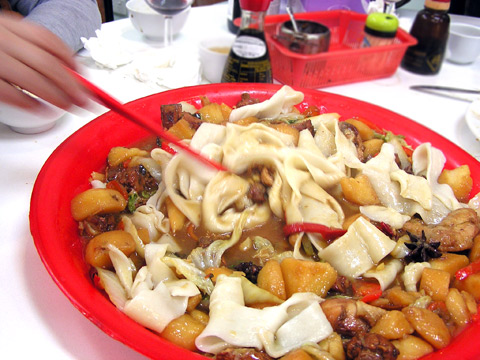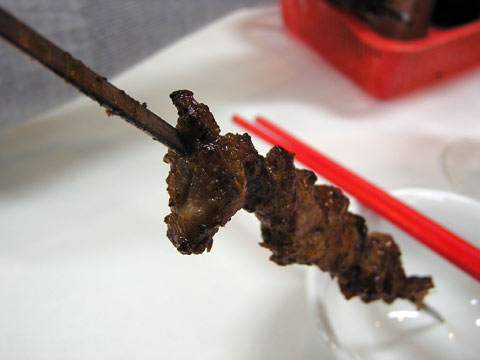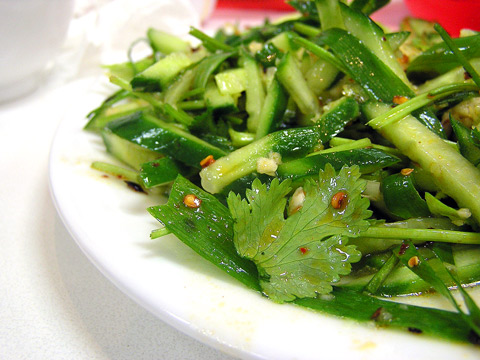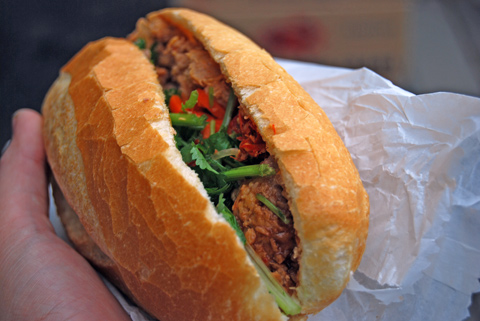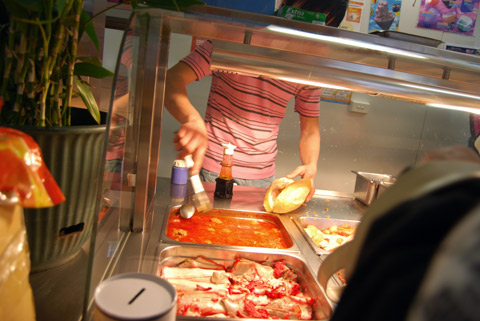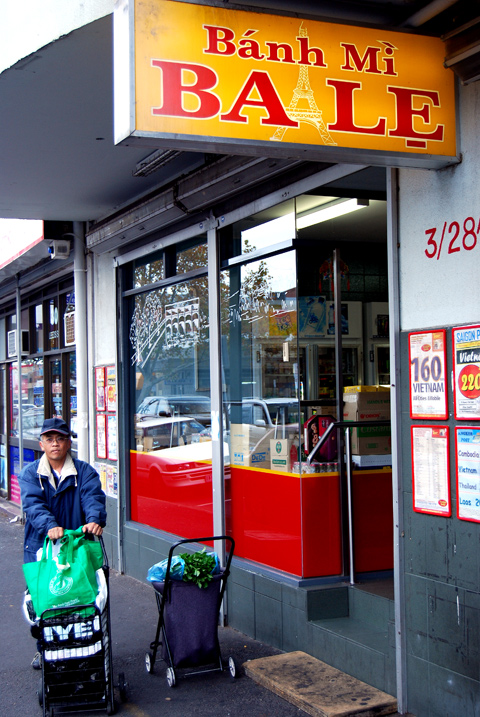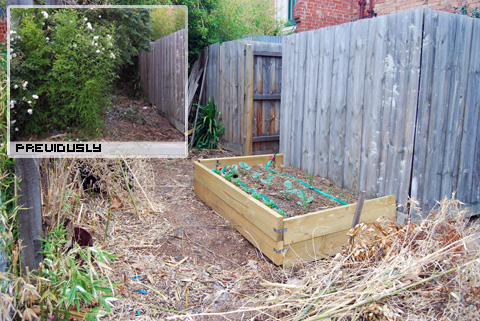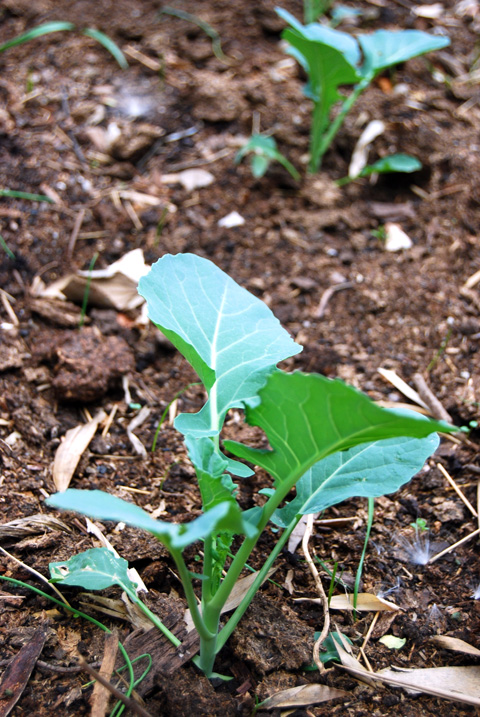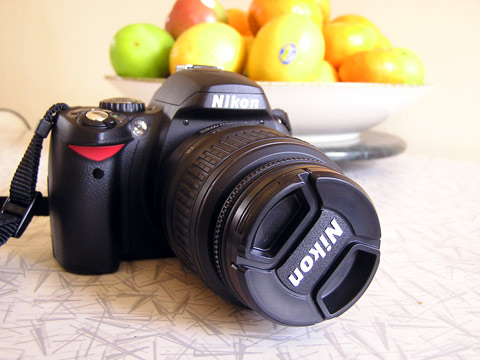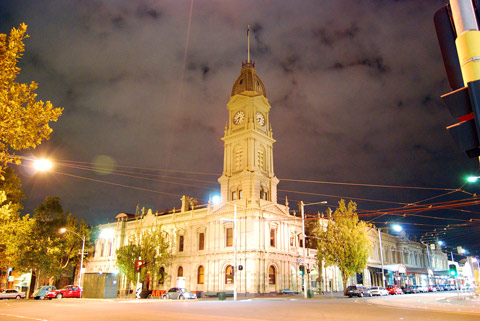Unless you’re going to act upon it, measuring anything is nothing more than statistical masturbation, whether it be on the web or anywhere else. There is the warm afterglow that you get from the first time that you hit a hundred; a thousand or a hundred thousand visitors to your blog a day, but once you know that people are reading your blog: then what?
Web traffic alone is meaningless without a goal attached to it. And this leads me back to the first post in this series where I asked you what is motivating you to get into the business and art of food blogging. If you don’t have a goal, there is no need to measure anything at all on your blog.
How should I measure:
Get Google Analytics for whatever blogging platform you use. It is both a blessing (it’s free! at least if you don’t count Google harvesting your rich and creamy data as a cost) and a curse (it’s so powerful that you can spend more time analysing statistics and staring like a rabbit in the headlights into an oncoming graph than you can writing about food). It’s also inaccurate; but still accurate enough for the common food blogger who doesn’t need to worry about a 25% margin for error or so.
What should I measure:
Generally:
Always measure trends
Daily bumps and spikes in web traffic are meaningless if they cannot be repeated at will or sustained. What all bloggers should aim at is growth in audience (unique visitors), average page views, time spent on site, and readers of your RSS feed over time. It will take a few months after the launch of your blog for any of these things to become apparent. In the early days you (probably) won’t have enough content or readers to make a real assessment of where your food blog is headed.
Always measure your goals
Amongst people like me who measure web traffic for a living, there is much talk about how to judge the meaningfulness of web traffic beyond just visits to your website or even “conversions” (the people who buy your product and the path by which they arrive there). If you’re not selling a product and your goals are as ephemeral as the vagaries of food blogging then what is worth measuring?
Unless you’ve read the how to start a food blog, design, and making money posts, the following goals will sound a little vague.
Specifically for food bloggers:
Goal: I want to meet people who write on the web that aren’t freaks and be a part of a community of like-minded, passionate food junkies
Most important metric: Incoming links from blogs that you respect; conversations started. And who you’ve met.
Incoming links is by far the easiest of these to quantify. Google Analytics does it under Traffic Sources > Referring Links. You can also chase up the links that have never been clicked to your site by typing site:www.yourblog.com into Google’s maw. This will output a raw number of incoming links and it’s easy enough to scan through the list to see if any blog that personally matters to you
Conversations started can encompass much more than just the number of comments on your site. The trend for blogging is that an increasing amount of the talk generated about what you write about will happen on sites other than your own: on Twitter, Facebook, MySpace, StumbleUpon, on other people’s blogs and in the mainstream media. There isn’t a convenient tool yet to roll all the conversations together and come out the other side with a useful metric. When someone comes up with a widely agreed upon “conversation quotient“, I’ll be a happy web marketer. Nielsen BlogPulse is the beginning of these tools, along with Tweetscan or Summize for Twitter.
Check your address book to see who you’ve met. Poke your Facebook friends or something.
Goal:I want to make money
Most important metric: How much money you’re making.
Yes, it is that obvious.
While masses of visitors to your site will often be a proxy to how much money you’ll make (and is a direct correlation if you’re lucky enough to be paid per visit rather than per click), if you want to make money, measure what works. If you’re using Google Adsense, they include handy information on the click-through rate for each ad that you place on your site. Use this information to tweak ad placement.
Goal: I have a food business/restaurant/am a food professional and need somewhere to honestly link up with the punters/debate my awesomeness
Most important metric: Local traffic and conversions. Unless you’re running a destination restaurant that punters will fly in from all over the world to visit, the most important thing for a restaurant/locally-focussed food business is the traffic from your immediate region and how many of those people eat your food or buy your product. To measure this traffic on Google Analytics, go to Visitors > Map Overlay, click your country then use the Segment selector to segment up your national or regional audience however you choose.
Secondly, if you’re selling something, you can set up goals to measure whatever action/conversion is desired. Google can tell you more about setting goals in Analytics. Offline, you need to harvest this data wherever you can. Can you ask those who book or buy where they found out about you?
How should I act upon it:
Repeat the things that are successful. Stop doing the things that aren’t successful. If you’re tracking a goal, defining what counts as success is straightforward. Do you write posts that start more conversations than others? Could you spin them out into a monthly series? While you were building an audience did something spur a huge number of people to subscribe to your RSS feed? Could you, in good conscience, repeat it?
If you were obsessed with statistics, you could test every change to your website using multivariate analysis before you commit to any change, but for the average food blogger, it is not worth it.
